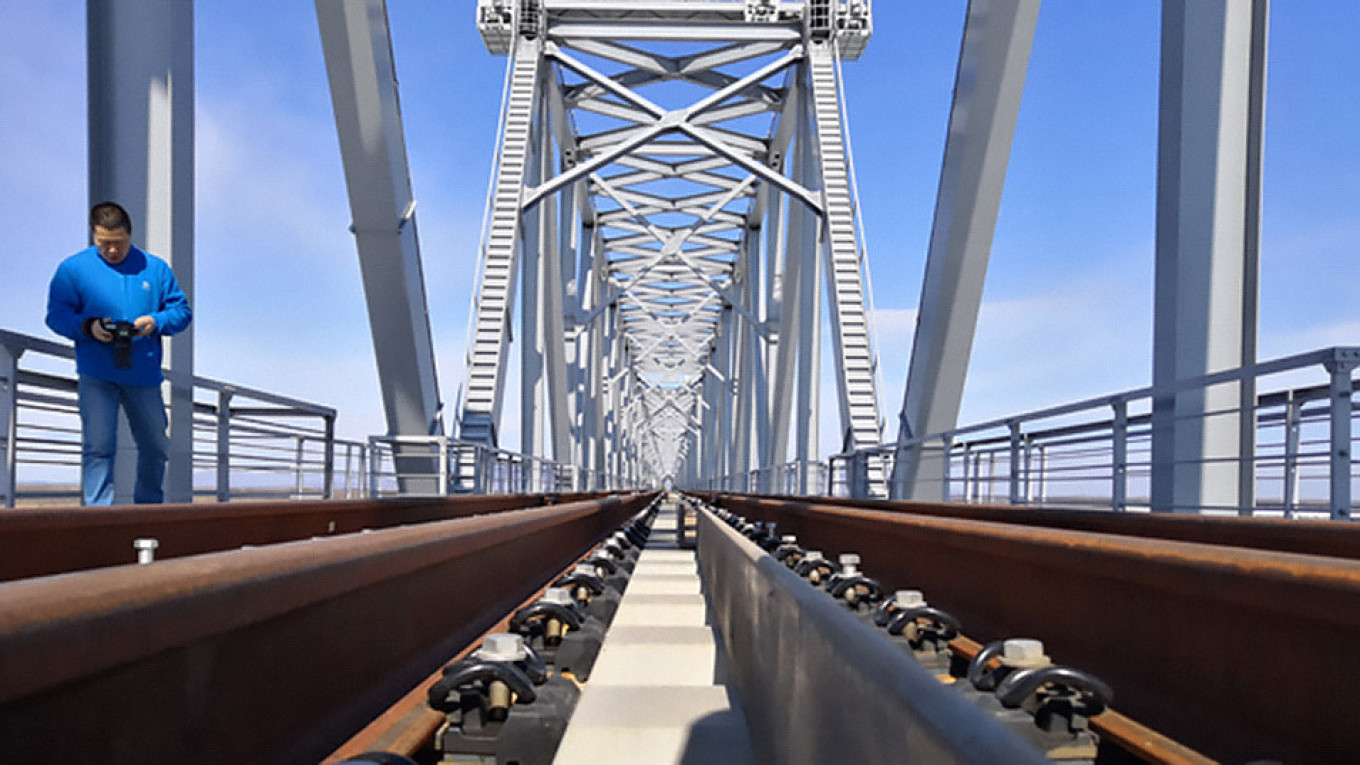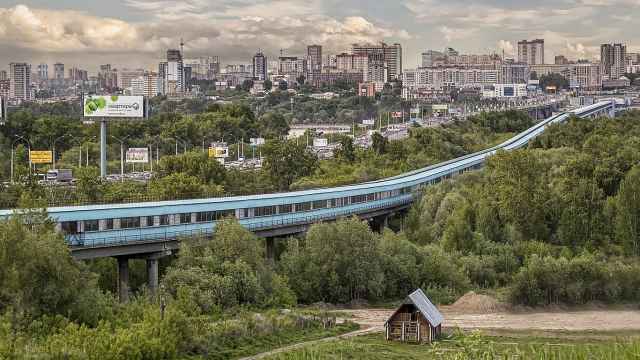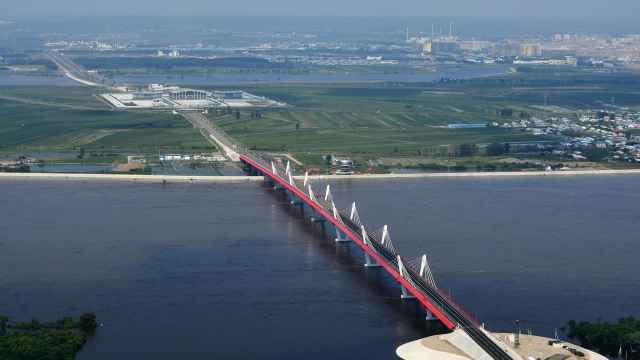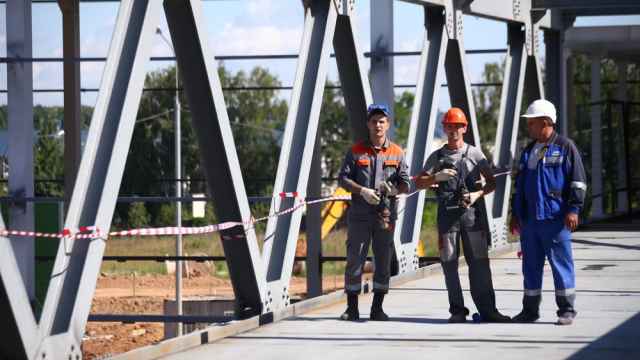Russia has wrapped up construction of its first rail bridge to China, connecting the two countries across the Amur River, Russian media reported on Thursday.
Construction of the 2,200-meter bridge between Nizhneleninskoye in Russia and Tongjiang city in China began in 2014, underscoring Russia’s Eastern pivot amid deteriorating ties with the West. China completed construction of its section across what it calls the Heilongjiang River in October 2018.
Russia has installed the final steel beam into its section of the bridge, China’s Heilongjiang administration website was quoted by the RBC news website as saying.
“This means that the first railway bridge between the countries has been successfully connected,” the administration said.
Construction work is expected to wrap up in full this July, the project’s chief engineer was quoted as saying by Russia’s state-run media.
The bridge is expected to serve as an international goods transportation channel with an annual shipment volume of 21 million tons when it opens later in 2019.
A Message from The Moscow Times:
Dear readers,
We are facing unprecedented challenges. Russia's Prosecutor General's Office has designated The Moscow Times as an "undesirable" organization, criminalizing our work and putting our staff at risk of prosecution. This follows our earlier unjust labeling as a "foreign agent."
These actions are direct attempts to silence independent journalism in Russia. The authorities claim our work "discredits the decisions of the Russian leadership." We see things differently: we strive to provide accurate, unbiased reporting on Russia.
We, the journalists of The Moscow Times, refuse to be silenced. But to continue our work, we need your help.
Your support, no matter how small, makes a world of difference. If you can, please support us monthly starting from just $2. It's quick to set up, and every contribution makes a significant impact.
By supporting The Moscow Times, you're defending open, independent journalism in the face of repression. Thank you for standing with us.
Remind me later.






